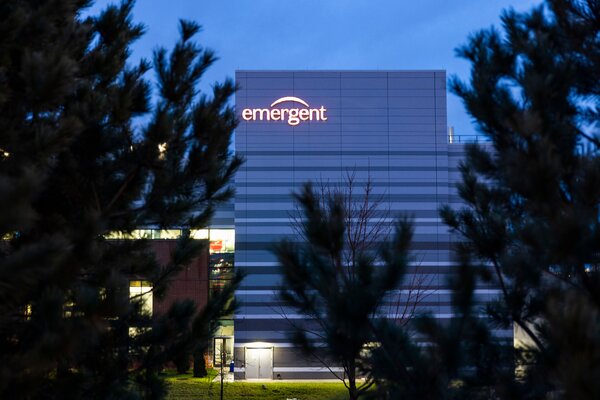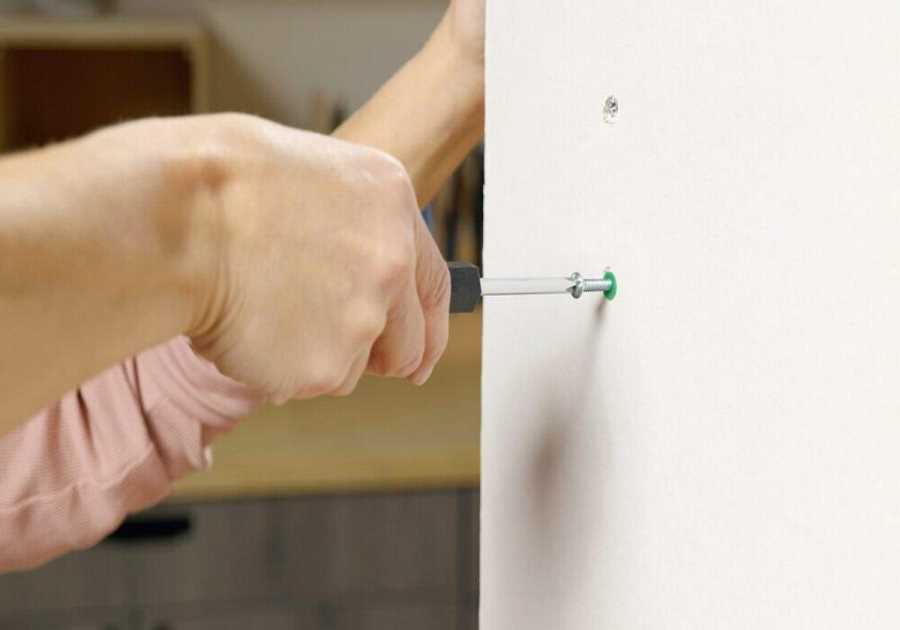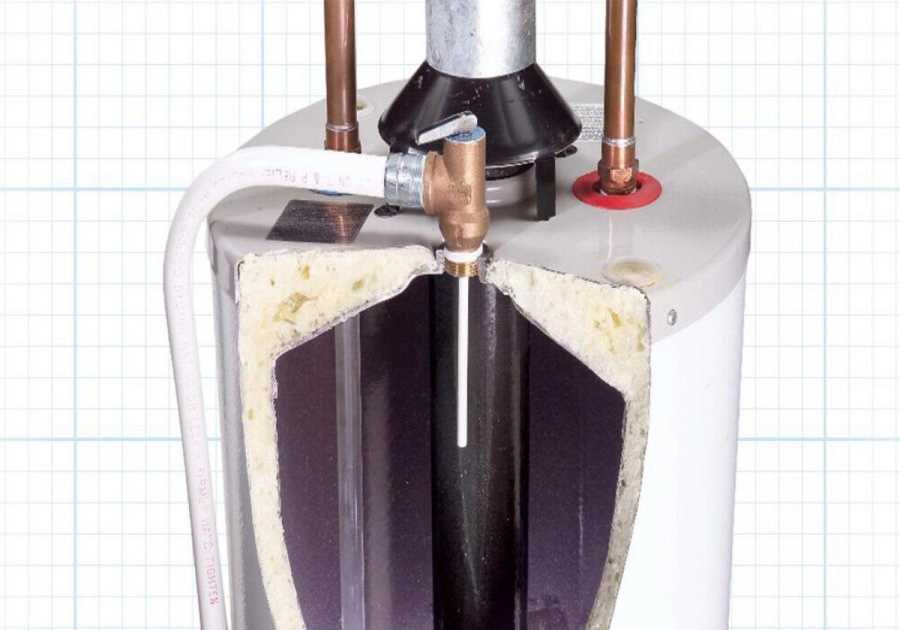
WASHINGTON — As the Biden administration tries to stanch yet another wave of the coronavirus pandemic, senior White House officials have also been considering a proposal to ensure the nation is better prepared for the next infectious disease outbreak.
Key to the plan is the creation of a taxpayer-funded “vaccine hub” where experienced drug makers would partner with the government, reliably churning out millions of doses under federal oversight.
The proposal is partly a response to a searing failure by a once obscure Maryland biotech firm, Emergent BioSolutions. While Pfizer and Moderna had spectacular success producing vaccines, the government entrusted the manufacturing of two of the other leading candidates to Emergent, which was forced to toss tens of millions of doses of Johnson & Johnson’s vaccine and to quit producing the AstraZeneca vaccine because of serious quality problems that ultimately led the Biden administration to cancel its contract.
The government’s partnership with Emergent, which cost taxpayers hundreds of millions of dollars over the past decade, was supposed to be a pillar of the nation’s pandemic preparedness. Instead, it proved to be the culmination of 30 years of frustrations.
Three times over the past three decades, presidential administrations explored plans for a vaccine overhaul like the one President Biden is now considering, only to be thwarted by pharmaceutical lobbying, political jockeying and cost concerns, a New York Times investigation found.
In each case, the nation was left ill prepared for the next crisis — while creating a vacuum that Emergent eagerly filled.
“The reason why Emergent got so many contracts is mostly because they were the only ones willing to do the work,” said Dr. Kenneth Bernard, a top biodefense adviser to Presidents Bill Clinton and George W. Bush.
To reconstruct the forgotten history that led to this year’s vaccine debacle, The Times reviewed thousands of pages of records — among them files from presidential and military archives, previously undisclosed government reports, industry correspondence and business plans.
Reporters also interviewed more than 30 people who have helped shape U.S. biodefense policy, including officials from five presidential administrations, corporate executives and industry consultants.
Time and again, The Times found, analyses commissioned by the federal government arrived at a similar conclusion: Ensuring access to specialized vaccines is a public good that cannot be left entirely to the market; yet it is unrealistic for the government to take on the task alone.
But while the government has tried to enlist major pharmaceutical companies, they have largely been reluctant to divert resources from commercial products. At the same time, they have stood in the way when the government has proposed its own factory, fearing a taxpayer-backed competitor.
Repeatedly, The Times found, a middle path won support in Washington: a government plant run by a major drugmaker. Budgets were drawn up and sites selected. In one case, the pre-eminent vaccine company Merck got on board.
But the momentum always evaporated. The government opted for incremental changes, dangling incentives before less experienced companies — chief among them Emergent.
Once again, a public health crisis has laid bare the heavy cost of that approach.
Purchases in past years of Emergent’s anthrax vaccine severely strained the budget of the nation’s Strategic National Stockpile, crowding out investments in products like masks that were in critically short supply last year, as The Times reported in March.
And as the government banked on Emergent to make both Johnson & Johnson’s and AstraZeneca’s Covid-19 vaccines, problems in Baltimore delayed immunization efforts around the globe. Nearly two years into the pandemic, the Baltimore plant has still not received final clearance from the Food and Drug Administration.

An Emergent spokesman, Matt Hartwig, acknowledged the company’s struggles but said it had taken on a difficult task that others would not.
“While everything has not always gone exactly as planned, we have remained steadfast in our commitment to the American people,” Mr. Hartwig said in a statement.
He noted that regulators ultimately authorized the release of 100 million Covid-19 vaccine doses made at the Baltimore site, with more still under review. Mr. Hartwig said the decision to end the federal contract was mutual. But a senior administration official said the government had stopped paying Emergent after discovering quality problems and later reached an agreement to terminate the partnership without a costly legal fight.
Now, as President Biden considers a future less dependent on Emergent, the experience of his predecessors provides both a road map and a warning.
The pandemic tested the current approach, said Dr. W. Craig Vanderwagen, who ran the federal office charged with preparing for health emergencies from 2007 to 2009 and is a business partner of Emergent’s founder.
“It was pretty clear that we failed.”
‘Over and Over Again’
Long before Operation Warp Speed, there was Project Badger.
Then, as now, the government scrambled to secure manufacturing capacity in the midst of a crisis, finding itself with effective vaccines but few places to mass-produce them. Then, as now, officials proposed greater federal intervention to ensure the nation wasn’t again caught unprepared.
In 1990, as the U.S. military planned an operation to expel the invading Iraqi army from Kuwait, officials received a sobering intelligence report: Saddam Hussein was probably in possession of anthrax and botulinum toxin.
The Defense Department had vaccines for both threats, but the supply was small. Project Badger searched for a solution.
Officials identified over a dozen companies that might be able to make more of the vaccines and tried to persuade them to help. None of them agreed, unclassified documents show.
The companies had concerns about legal liability and did not want to invest in switching production lines if the government couldn’t promise large purchases after the crisis. One company said that “the cost in lost business alone would have been $62M,” according to an Army memo.
Ultimately, the military had to limit vaccination to troops considered at the highest risk. Chastened, the Pentagon commissioned a study that recommended a federal site run by an experienced manufacturer. The government had embraced the model previously for weapons plants and Energy Department labs.
DoD determined that the lack of adequate biological warfare vaccines is a critical problem and that a dedicated vaccine production facility was a vital component of the DoD biological defense program.
Defense Department memo
In 1993, the Pentagon informed Congress that it planned to build a vaccine site and soon chose a location in Pine Bluff, Ark. But the Democratic-led Congress, balking at the $200 million price tag, barred spending until further study. Senior Defense leaders shared those concerns, said Dr. Anna Johnson-Winegar, then an Army biodefense official. The proposal died.
Dr. Johnson-Winegar said she had warned the Pentagon that if the effort failed, “we’re going to do the same thing, the same exercises over and over again, when the next threat arises.”
‘The Only Game in Town’
Where most big vaccine makers saw a small, unreliable market, an entrepreneur named Fuad El-Hibri saw an opportunity.
Born in Germany and educated at Stanford and Yale, Mr. El-Hibri had worked in banking and telecommunications before advising a company that held the rights to distribute the British government’s anthrax vaccine.
So he was interested when the State of Michigan announced in 1997 that it was selling its vaccine lab. The aging factory needed major renovations but came with a unique asset: the license for the only anthrax vaccine approved by U.S. regulators.
Mr. El-Hibri put together a bid that allowed the company he created — BioPort, later known as Emergent BioSolutions — to secure the license and eventually earn billions.
Not yet an American citizen, he assuaged government concerns about foreign ownership of a defense asset by enlisting a former chairman of the Joint Chiefs of Staff to be the company’s face. He also included some state officials who ran the site as shareholders. The move was legal, but a legislator decried it as an inside deal that bilked taxpayers.
Mr. El-Hibri got it all for a relative pittance, according to documents obtained by The Times. Of the $25 million sale price, he and his partners paid $3.25 million in upfront cash. Almost half the total came from loans to the company from Michigan, including one that was free of interest. Most of the remainder was to come from product donations and royalties.
The site’s true value soon became apparent. The Pentagon had recently announced a plan to inoculate all troops against anthrax, and it was willing to pay almost any price.
“They were the only game in town, and we had to deal with them almost on their terms,” Dr. Johnson-Winegar said of BioPort. “They had the facility, they held the license and they said, ‘We want a contract for X amount,’ and that’s the way it was.”
As the young company struggled to make the vaccine, the federal government spent more than $30 million to keep it afloat, including an interest-free advance that BioPort used to pay off the loans from Michigan. Auditors questioned some of the company’s spending — including about $23,000 on office furniture for Mr. El-Hibri, according to a previously confidential document.
Mr. Hartwig, the Emergent spokesman, said federal support was needed because the facility “had fallen into a state of disrepair” under state ownership. Questions about spending during audits “are routine,” he said, “and no allegations of impropriety were ever made.”
By 2001, some lawmakers and Defense officials began reconsidering the decision to rely solely on the private sector.
‘The Private Sector Has Failed Us Terribly’
A long-feared biological threat suddenly became real, and the country was again unprepared.
Shortly after the Sept. 11 attacks, a string of anthrax-laced letters caused a national panic. With a war in Afghanistan and the possibility of further terrorist attacks looming, demand for the vaccine was never more urgent.
But BioPort still had not fully addressed regulators’ concerns, and the vaccine supply was rapidly dwindling, again forcing the military to scale back its immunization program.
As Congress debated what to do, Senator Tim Hutchinson, an Arkansas Republican, offered a solution: build a federal plant operated by a private company.
The Coronavirus Pandemic: Latest Updates
- More European countries embrace vaccines and restrictions.
- As the virus surges again, U.S. colleges worry about a mental health crisis.
- When will the 500 million free tests that Biden promised be available?
“There are certain things only government can do,” Mr. Hutchinson said at an October 2001 hearing, “and in this case, the private sector has failed us terribly.”
The revived idea had already been gaining support. Spurred in part by BioPort’s struggles, the Defense Department had commissioned another expert study. It concluded that the government’s approach “is insufficient and will fail” and backed building a government site.
The DoD cannot expect industry to invest its resources to maintain the infrastructure (e.g., facilities, equipment, and personnel) or modernize its facilities in order to meet DoD vaccine needs. Lessons learned demonstrate that such expectations inevitably lead to a loss of capability and source of vaccines.
Department Department report
The surgeon general encouraged the Defense Department to begin work, suggesting the site would safeguard civilians.
The idea also had a proponent in the White House: Dr. Bernard, a biodefense adviser to Mr. Bush who had grown frustrated by fruitless talks with pharmaceutical representatives.
“The classic line is, ‘We understand this would be good for America and good for our national security, but we have a fiduciary responsibility to our stockholders to make X amount of profit,’” Dr. Bernard said.
Mr. Hutchinson led the charge on Capitol Hill, and members of both parties pressed the Pentagon to act. Defense Secretary Donald H. Rumsfeld responded in June 2001, writing that his department was “planning for construction.”
But the next year, the defense budget no longer included money for the project. Senator Kay Bailey Hutchison, a Texas Republican, wrote to Paul Wolfowitz, the deputy secretary for defense, demanding to know why.
Mr. Wolfowitz cited new interest from the private sector. “Whereas in the past there was limited industry interest,” he replied, “the events following Sept. 11, 2001 have indicated an industry desire to assist.”
While the pharmaceutical industry pledged support, its lobbyists descended on Washington to make sure one thing did not happen.
Building a government facility “would actually undermine incentives for manufacturers to produce vaccines,” Wayne Pisano, an executive at the vaccine maker Aventis Pasteur, told Congress in September 2002.
Frank Rapoport, a pharmaceutical lobbyist, was more blunt the following year. Large drug companies “are ready to come to the table,” he told Congress, “but they do not want some humongous government facility that is going to compete against them.”
Mr. Rapoport and other industry consultants worked with Congress and the Bush administration to craft a different plan. Dr. Bernard said he grudgingly dropped his push for a government site after being told the idea “wasn’t politically feasible” in Congress.
The outcome, a 2004 law known as the Project BioShield Act, was another bet that juicier incentives and guaranteed funding — a $5.6 billion reserve — would attract experienced manufacturers. Two years later, Congress went further and created an agency to help companies through the expensive and risky late stages of developing biodefense products.
Despite the changes, large pharmaceutical companies mostly sat out. None of the first contracts went to a major vaccine maker.
Dr. Bernard felt betrayed. “We would bring in pharma companies, and they said, ‘We don’t need anything other than a guaranteed market,’” he recalled.
“They lied.”
Yet again, the government had to turn to smaller biotech firms to fill the void. Mr. El-Hibri’s company was ready.
‘The Lockheed Martin of Biodefense’
Rebranding itself as Emergent, the company moved its headquarters from Michigan to Gaithersburg, Md. — just a short drive from its biggest customer, the federal government.
It also went public. On Nov. 22, 2006, Mr. El-Hibri marked the moment by ringing the opening bell at the New York Stock Exchange.
While bigger companies mostly ignored the contracts offered by the newly created agency — the Biomedical Advanced Research and Development Authority, or BARDA — Emergent forged close ties that would pay off.
The Coronavirus Pandemic: Key Things to Know
The Omicron variant. The highly transmissible Covid version appears to be less severe than previous variants, according to new studies. Research also suggests many non-mRNA vaccines offer almost no defense against infection, though the Pfizer and Moderna boosters, which are mRNA-based, most likely provide strong protection.
In 2007, the agency awarded the company a nearly half-billion-dollar contract to make its anthrax vaccine — its first multiyear deal and one that would fuel years of profitability.
A mutual dependence evolved. The agency invested hundreds of millions of dollars in Emergent, and Emergent publicly praised the agency and pushed for it to receive more funding.
On the back of its anthrax vaccine sales, Emergent also built a lobbying and government-contracting leviathan, cultivating influence and expertise that few competitors could match.
The company became the dominant player in a little-noticed corner of Washington bureaucracy — “the Lockheed Martin of biodefense and U.S. government contracting,” Sean Kirk, then an Emergent senior vice president, would quip during a presentation to investors. Emergent bought up competitors’ products, becoming the government’s only option for vaccines and treatments addressing some of the highest-priority biological threats.
“We have worked hard to ensure that political leaders on both sides of the aisle and career government officials understand the importance of preparedness and the investment required,” said Mr. Hartwig, the Emergent spokesman. When bidding on government contracts, he said, “Emergent has followed the same process as any other company.”
The third time a government-commissioned study recommended a federal manufacturing site, Emergent was positioned better than ever.
‘A Troubling Lack of Commitment’
The 2009 report suggested a variation on the previous recommendations: The vaccine site should be owned by a nonprofit that could partner with major pharmaceutical companies while remaining accountable to the public and not shareholders.
The projected $750 million construction cost looked high, but the report predicted that the government would save as much as $28 billion over 25 years when compared with paying a premium to firms like Emergent.
Officials at the University of Pittsburgh Medical Center, which had led the review under a federal contract, went on to establish a nonprofit of their own. They called it 21st Century Biodefense and placed it under the leadership of Robert J. Cindrich, a former federal judge who was the center’s chief legal officer.
The current USG strategy clearly leaves the country at risk. An alternate strategy exists…
Government-commissioned report from the University of Pittsburgh Medical Center
One by one, Mr. Cindrich and his colleagues got titans of American industry to sign on, including General Electric and IBM.
The biggest prize was Merck. By persuading the company to help run the proposed factory and train its staff, the Pittsburgh group had done what the government had been attempting for years.
Mr. Cindrich and his team sensed momentum. The 2009 H1N1 influenza pandemic had once again put a spotlight on biodefense, and a review by the health department had proposed manufacturing centers that sounded much like what the Pittsburgh group was suggesting.
When the health department asked for bids in September 2010, however, the group’s leaders were stunned by its scaled-back vision. The proposal essentially called for upgrading existing sites and renting manufacturing capacity.
At the start, the government would pay for most improvements, but it would provide only half of continuing costs. The bidders were expected to cover the rest through separate arrangements with private companies.
In a letter, the Pittsburgh group warned the government that the approach “signals a troubling lack of commitment to the biodefense mission” and “will fail.”
Other potential bidders had similar concerns, a review of communications and transcripts shows. Some questioned whether government orders would actually materialize, and they worried that private customers wouldn’t contract with a site where their products could be bumped by government orders.
The Pittsburgh group dropped out. It had already spent millions of dollars on the proposal and couldn’t justify spending more.
“My staff and I were near tears,” Mr. Cindrich recalled. “We believed in what we were doing.”
In 2012, BARDA awarded three contracts worth about $400 million.
At first, it appeared that the agency had attracted two large pharmaceutical firms — Novartis and GlaxoSmithKline — but their involvement proved temporary. The companies already had contracts with the agency to work on vaccines for influenza pandemics. It was a distinct corner of biodefense that attracted major manufacturers because they could use much of the same technology and equipment for their seasonal flu shots.
In 2012, BARDA incorporated Novartis’s flu vaccine plant in North Carolina into the new program, and GlaxoSmithKline agreed to work as a subcontractor to another winning bidder, Texas A&M University.
Within a few years, however, both pharmaceutical firms bowed out. Novartis decided to get out of the flu vaccine business, and GlaxoSmithKline stopped participating in the program with Texas A&M. The university soldiered on, and in 2020, the government enlisted it to manufacture Novavax’s Covid-19 vaccine, which is not yet authorized for use in the United States.
But it was the third winning bidder that the government relied on most heavily when the coronavirus pandemic arrived: Emergent.
‘Eyes Wide Open’
At a congressional hearing this May, the scene was eerily familiar, but this time the crisis was unparalleled in scale.
Mr. El-Hibri, facing irate questioning, declared Emergent’s manufacturing troubles “unacceptable” and pledged improvements — much as he had two decades earlier when called to answer for his company’s struggles making anthrax vaccines. Emergent was hardly flawless, he said, but it had taken on a difficult task when others had not.
“Everyone went into this with their eyes wide open,” Mr. El-Hibri testified, “that this is a facility that had never manufactured a licensed product before, that it’s a facility that, although not in perfect condition, far from it, was the facility that had the highest level of state of readiness.”
Government officials had looked elsewhere. During the panicked early days of the pandemic, they even considered using veterinary facilities, as Project Badger had done 30 years earlier. They also tried to enlist Merck (which has since agreed to produce Johnson & Johnson’s vaccine).
Publicly, the government and Emergent touted their arrangement as a testament to advance planning. In reality, the partnership was foundering.
Over the years, the government had commissioned little work at the site, leaving the plant and its work force largely untested, a government review found in 2018. In fact, before the pandemic, Emergent had yet to earn regulatory approval to manufacture anything at a commercial scale at the Baltimore plant.
Mr. El-Hibri acknowledged during the hearing that “the facility, even though it was meant to be at a state of readiness, was not quite at that level.”
Mr. Hartwig, the spokesman, said that the partnership had been an “innovative idea” but “the government never fully executed on the vision.” Because of inadequate federal investments, he said, “Emergent continued to operate the facility at a loss.”
In November, the Biden administration canceled the contract, and now, for a fourth time in 30 years, the federal government is assessing its failures and searching for solutions.
Timothy Belski, an official with BARDA, said at a recent industry conference that it was “re-envisioning” the program begun in 2012 with a focus on “proven facilities, proven staffing and those proven quality systems.”
Senior administration officials are again considering how best to attract experienced pharmaceutical companies. Some favor reserving production lines at major manufacturing plants. Others prefer a dedicated government site.
Emergent again plans to offer its services, Mr. Hartwig said, and the company continues to provide the government with products to combat threats like anthrax and smallpox. “Going forward the important thing is that we — both government and private sector partners — learn from this experience so we don’t repeat the mistakes of the past,” he said.
Whatever path they choose, Biden officials say it will not be more of the same.
“The world is very different today,” said Dr. David Kessler, the chief science officer for the White House coronavirus response team. “I think the pharmaceutical industry recognizes that its pre-eminence is also tied to making sure that they can be significant players in pandemic preparedness.”
Former federal officials and independent experts who wrote the earlier unheeded recommendations calling for a government site — in 1993, 2000 and 2009 — said in interviews that they saw history repeating itself yet again.
“It’s a good idea,” said Dr. Johnson-Winegar, the former senior defense official, “but there are enough naysayers that it’s just not going to fly.”
Rebecca R. Ruiz contributed reporting from New York.
Title: Beneath a Covid Vaccine Debacle, 30 Years of Government Culpability
Sourced From: www.nytimes.com/2021/12/23/us/vaccine-hub-government-culpability.html
Published Date: Thu, 23 Dec 2021 10:00:26 +0000






